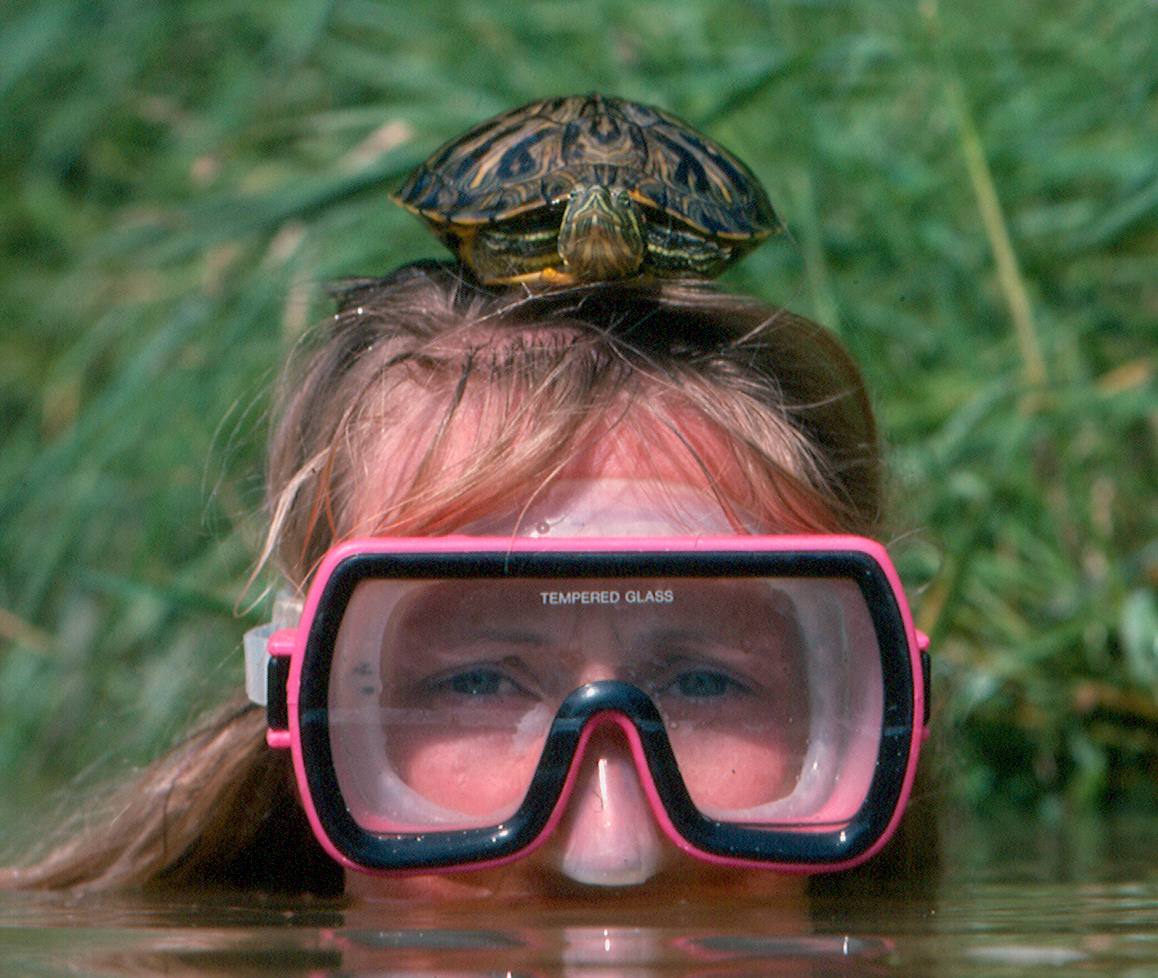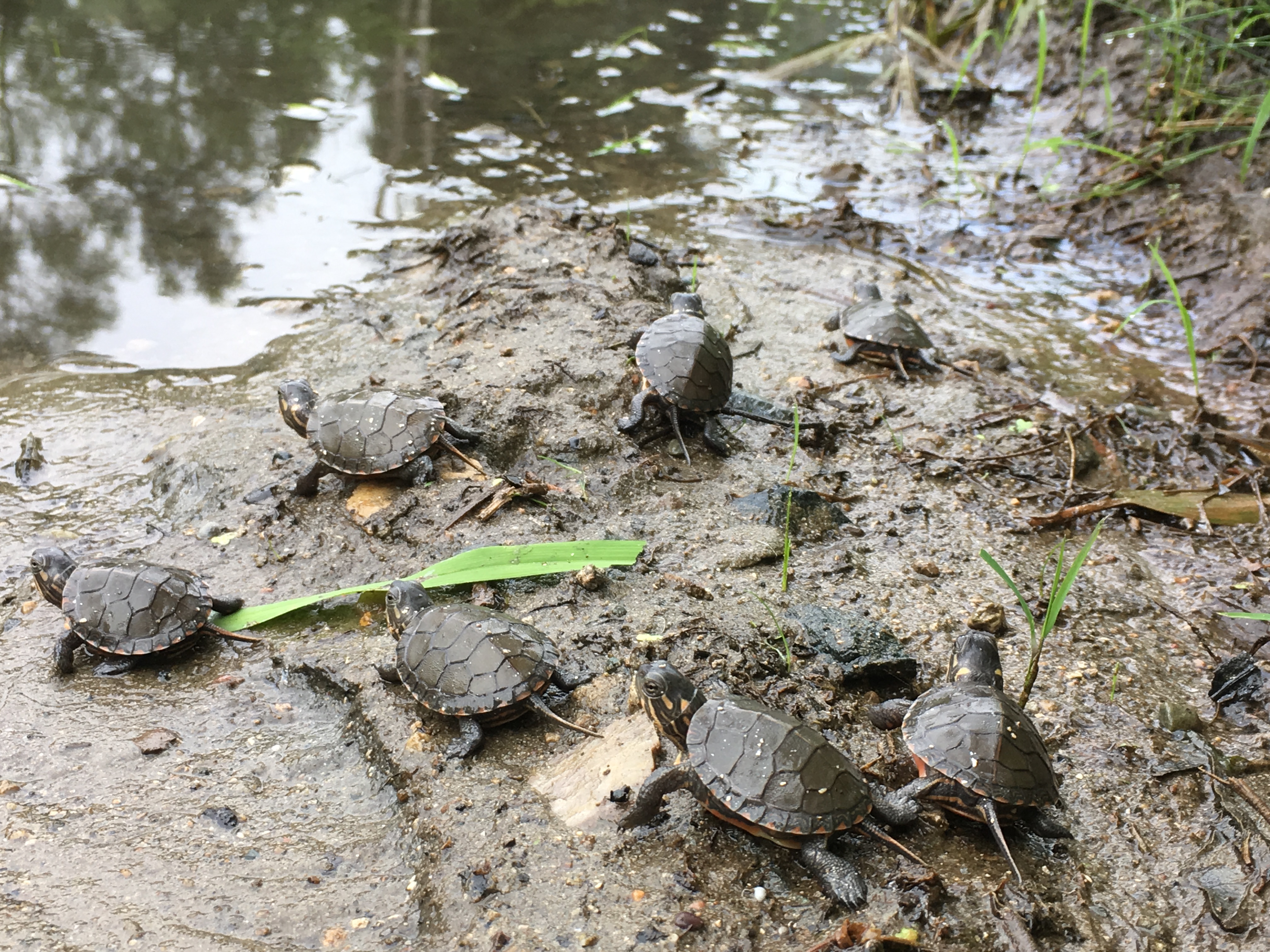
After a stint as an intern for Great Lakes Now, Kathy Johnson is shining a light on the Kalamazoo River oil spill 10 years ago and the subsequent turtle recovery efforts with her first fully produced segment for Great Lakes Now.
Like many journalists working in the Great Lakes region covering stories about the Great Lakes, Kathy Johnson’s roots begin in the region.
She grew up right by the St. Clair River and spent a lot of time on the waters with her family.
“From sailboats and houseboats to Sunfish and Sea Ray, we owned all kinds of different watercraft over the years,” Johnson said.
Johnson produced the segment “Turtles vs. Oil” for Great Lakes Now Episode 1017 “Recoveries.”
In it, Great Lakes Now talks to the wildlife biologist who led the efforts to save turtles impacted by the 2010 Kalamazoo River oil spill.
API key not valid. Please pass a valid API key.Watch the full episode here.
Johnson also owns PolkaDot Perch, a production company, with her husband Greg Lashbrook.
Great Lakes Now talked with Johnson about the episode. The following conversation was slightly edited for length and clarity.
Great Lakes Now: Why was the anniversary of the Kalamazoo River oil spill something you wanted to cover?
Kathy Johnson: As a journalist, I enjoy doing follow-up pieces. I think of breaking news as the first chapter of the book and I enjoy finding out how the story ends. For the Kalamazoo oil spill, I was interested to see how the river was doing after a decade of effort and a billion dollars spent on restoration. My curiosity often guides my work. In this case, I wondered how exactly does one go about restoring 35-miles of a river after a million gallons of tar-sand oil has been spilled and dull-dozed away? I mean, where do you start? And who did the work? And how’d it turn out? In the process of finding the answers to these questions, the story naturally revealed itself.
GLN: How did you find out about the turtle aspect of the story?
KJ: I spent a month researching the 2010 oil spill. I found dozens and dozens of articles and YouTube videos about the spill event itself as well as the Enbridge pipeline system in Michigan. But I found almost nothing about the people and work being done to repair the river. I decided to make that the focus of my piece. I interviewed half a dozen experts involved with the response and restoration work from the U.S. FWS and Michigan DNR to local Tribal elders. Several of them mentioned the turtle rescue effort and directed me to Josh Otten, one of the project’s researchers. As a diver, with a background in natural history documentaries, I was excited by a turtle angle before speaking with Otten. When he described the oil spill animal rescue and rehabilitation operation, I knew this had to be the focus of my piece.

Kalamazoo River turtle being cleaned. (Photo courtesy of Chris Battaglia, Focus Wildlife)
GLN: What was most compelling or unexpected about this whole story to you?
KJ: I found the scale of the animal rescue operation quite compelling. In the months following the spill, over 2,000 turtles were caught, checked, cleaned, rehabbed and released. Two thousand! To accomplish such a daunting feat, a massive pop-up wildlife rehab center was constructed, staffed and maintained for almost two years. Veterinarians from Michigan State University and zoos across the region supervised all the animal care. Oil spill wildlife rescue experts were flown in from the East, West and Gulf coasts. And dozens upon dozens of local volunteers showed up every day, month after month, and sat for hours in a windowless building, painstakingly cleaning the nooks and crannies of oiled turtles.
As if all of that were not enough to orchestrate, challenges continued even after the turtles were clean. Turtles collected two days after the spill might be healthy enough for release by day 10. But, 10 days post-spill, the clean-up efforts were still ramping up with years of work looming. The turtles could not be put back where they came from, so what should they do with the hundred newly cleaned turtles that were ready for release? Meanwhile, as you’re working that out, the turtle rescue team just brought in 50 more turtles.
GLN: What was something you had to cut that you would’ve liked to keep in the segment?
KJ: As part of my research, I had the privilege of interviewing two Native American elders from different tribes. Each gentleman shared several reasons why turtles hold a place of honor in Native American culture. Douglas Taylor with the Nottawaseppi Huron Band of Pottawatomi explained how the turtle played a key role in the Anishinaabe origin story while Jeff Martin from Gunn Lake told me about the seven original clans. He said the turtle is the king, so to speak, of the fish-water clan. I was disappointed that none of the Native American content made the final cut as I truly respect their culture and philosophy.

Turtle hatchlings on the Kalamazoo River. (Photo courtesy Josh Otten)
GLN: When it comes to video work, what kind of stories draw you in the most?
KJ: I love water. Ponds, creeks, rivers, lakes, streams, swimming pools, I like them all. When producing, I spend a lot of time looking at images and reviewing footage. If given the choice, I’d rather spend my day looking at footage of turtles basking on a riverbank than researching a pit-mining operation. Both are worthy topics, I just prefer to shine a spotlight on freshwater fish, turtles, mammals, et al.
I’d also like to change the common perception of the Great Lakes as merely a giant drinking fountain to a richer awareness and appreciation for the ecosystem as a whole. One of the ways I do this is by trying to include some underwater video footage in my pieces. I hope that by unexpectedly highlighting freshwater life, I can help to expand how people perceive the Great Lakes overall.
GLN: What other projects do you have going on or coming up relating to the Great Lakes?
KJ: I’ve got a couple of interesting projects in the works. I’ve been working on a follow-up piece about the invasive round goby. This is another story that is long overdue for an update. I’ve interviewed researchers from the University of Michigan to Shedd Aquarium in Chicago, and I’ve learned that a lot has changed in the 30 years since gobies arrived in the Great Lakes. Spoiler alert – there’s a surprising ending to this story!
I’m also producing a piece on traditional Native American food culture for the Nottawaseppi Huron Band of Potawatomi Indians in Battle Creek, Michigan. From wild river rice and maple syrup to harvesting wild edibles, this piece features traditional and modern Native American food culture in Southeast Michigan. My research is still in the early stage and I’m already excited to see where this piece takes me.
Read some of Johnson’s work for Great Lakes Now:
Rescuing History: Museum experts across Michigan race to save the Midland archive
Tested and Rejected: Blasting zebra mussels off walls wasn’t the first method attempted
Controlling Invasives: States urge residents to help stop spread of invasive species
Featured image: Kathy Johnson (Photo courtesy of Kathy Johnson)




